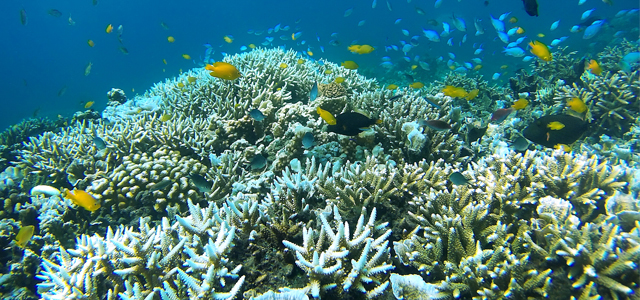The authority responsible for the Great Barrier Reef has proposed a radical range of new ideas to attract tourists to the reef, which was recently listed as being in “very poor” condition.
The Great Barrier Reef Marine Park Authority (GBRMPA) recently published its latest five-yearly Outlook Report for the Reef. The report finds that the long-term outlook for corals and reefs along the 2300 kilometre long system was is “very poor”.
The authority is looking now to allow more man-made attractions to sustain tourism. Statues have been submerged near the Whitsundays and bookings will soon open for the first underwater accommodation on the reef.
The new approach to tourism comes as a number of reports confirm that the reef is in a damaged state.
One of the biggest impacts on the Great Barrier Reef’s health is poor water quality, due to nutrient and sediment runoff into coastal habitats.
This was confirmed in a confronting annual report on the reef’s water quality, released by the Commonwealth and Queensland governments on Friday.
The Australian Marine Conservation Society (AMCS) says that the Great Barrier Reef, “cannot survive another decade of Federal Government inaction on the climate crisis. ”
Imogen Zethoven is the AMCS’ director of strategy.
“We are custodians of a global ocean icon and an international tourism drawcard, but Australia’s lack of ambition on climate change is pushing it to the brink,” she said.
“We can turn this around, but only if the Prime Minister cares enough to lead a government that wants to save it. And saving it, means being a leader here and internationally to bring greenhouse gas emissions down.”
The 2019 outlook report will be assessed in 2020 when the UNESCO World Heritage Committee meets to determine if the Great Barrier Reef should be listed as “in danger”.
The Morrison Liberal Government recently argued that climate change should not be the basis for an in-danger listing, because climate change is not Australia ’s responsibility alone.
Australian emissions rates recently hit record levels, largely driven by emissions in the electricity sector.
The Strike For Climate takes place in capital cities on 20 September. #climatestrike #noplanetb #climateemergency
Jonathan Foye is Insights’ Editor





